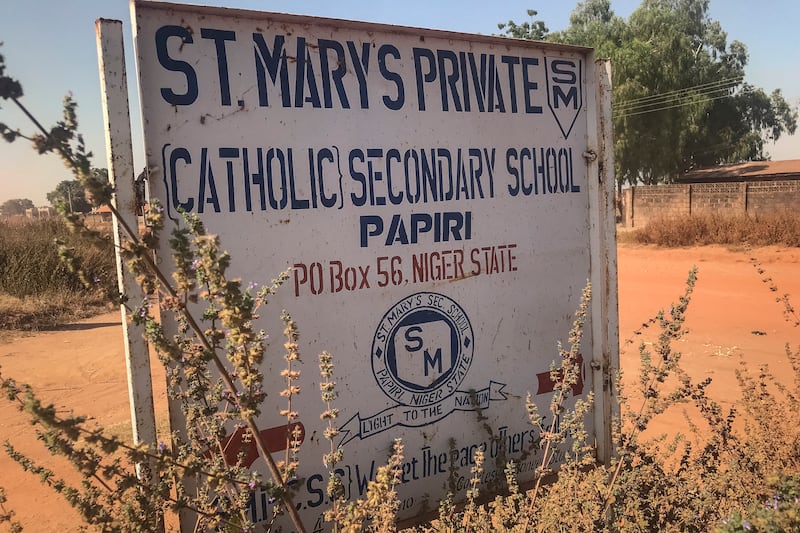Noel McNamara, the Leinster academy manager, tells a story about the unknown Kenyan middle distance runner torching a world class field at a Golden League meeting in Stockholm. The mystery man wasn't long capturing the first of three successive world titles in the 3,000 metre steeplechase.
Years later, Moses Kiptanui revealed that his younger cousin Richard Chelimo had already won several races in Europe. "I thought: what's so special about Richard? He's shorter than me and he wins," Kiptanui told Rasmus Ankersen in The Goldmine Effect. "If he can do it, why can't I?"
Enhance that belief system with three decades of track dominance and you get the modern Kenyan runner. Success became contagious.
Being a centre from Blackrock College, Garry Ringrose had Brian O'Driscoll like O'Driscoll had Brendan Mullin to follow into the golden league. Tadhg Furlong had Sean O'Brien, not unlike O'Brien had Shane Horgan, but none of these British and Irish Lions produced by the Leinster youth system hail from the same place. None of them had a cousin to light the road towards professionalism. They were outliers from GAA fields.
"We're scratching the surface of the potential that's out there," said Leo Cullen last year.
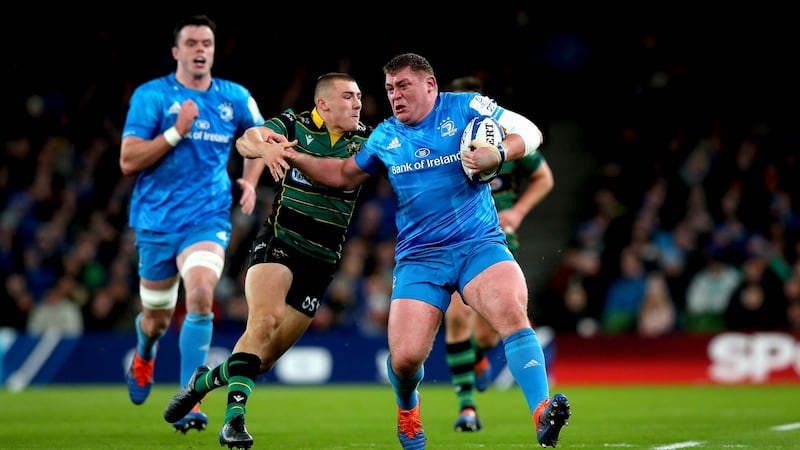
Trevor Hogan’s brief as Leinster talent coach is not to unearth a ‘Seanie’ or ‘Tadhg’ every few years but to excavate hidden talent from all 12 counties.
"We can't just dip into the GAA world or throw Sevens at it to solve the problem," said Hogan, the former Ireland lock of Tipperary youths extraction. "It takes a lot more people on the ground and a lot more investment and money to turn people towards rugby."
Raw athletes
Hogan is correct; it is far too simplistic to accuse professional rugby of pilfering amateur Gaelic Games - like Aussie Rules has managed to do - but it is where the majority of raw athletes are to be found.
Kilkenny, despite its everlasting hurling dynasty, knows plenty about producing international rugby players. The most famous being Willie Duggan, but it was Duggan's cousin Ned Byrne who boasts the rarest of dual honours, having won a Celtic Cross with the Cats in 1972 before establishing himself as Ireland's tighthead prop.
The GAA connection with rugby occasionally rhymes but, until this month, no one had shimmied from the Kilkenny minor hurlers to finishing Leinster outhalf in the Pro 14.
"The tempo of the game hits you straight away," said Tim Corkery after his debut against Zebre. "It takes a while to settle in, but it was unbelievable."
Corkery could so easily be describing an ash splintering affair in Nowlan Park but instead the 19-year-old was talking about his fledgling steps into professionalism.
A looming fear is that the people on the ground could be made scarce by the IRFU's belt tightening measures
Interestingly, he went to St Kieran’s College. This is the equivalent of Ringrose coming through Blackrock and playing Leinster schools before ditching rugby for the Dublin hurling panel.
“Tim’s story is fantastic,” said Hogan. “He could have slipped through the cracks quite easily.”
Corkery was about to be dropped from the Leinster under-19s squad until Declan O’Brien, who was overseeing the south east region, nudged the coach to reconsider.
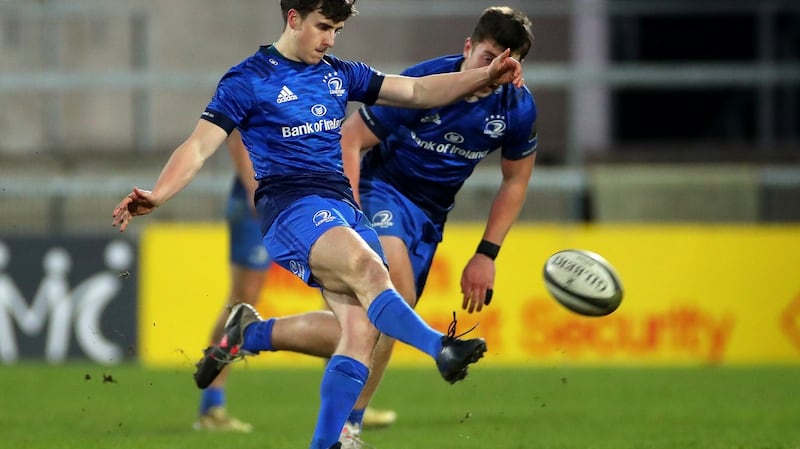
"It was a hard conversation but Declan just said there is something here, that you could be making a wrong call. You have to trust your people on the ground when it is not as obvious as a Ryan Baird or a Jamie Osborne. "
A looming fear is that the people on the ground could be made scarce by the IRFU’s belt tightening measures.
“That’s the challenge and the reward in spotting talent like Tim,” said Hogan, who wants to be recruiting a multi-gifted player like Corkery. “Early specialisation doesn’t really work we find. It is not healthy to ask kids to give up a sport like hurling, which is part of who we are, especially in Kilkenny.
"We had the same situation with Dave Hawkshaw and the Dublin minors. We encourage lads right up to 16, 17 to keep playing other sports and then, eventually, make a decision. We want them to develop skills in the air and athletic ability from GAA that would work in rugby.
“From a schools point of view - the stronghold schools - they probably have a philosophy that there is only one sport there and that is fine, but in the wider province it is much more diverse. It can work both ways.”
Talent search
The overall challenge for the provinces is to keep spreading their talent search to ensure Ireland’s next inclusion in the World Cup contender conversation - as happened in 2007 and 2019 - does not sound delusional.
"The Shane Horgan Cup is the equivalent of the Junior Cup in the school's world," Hogan explained. "It has developed a real identity for the players from each of the five regions. So, the south east would be Tadhg Furlong territory but it is also Brian Deeny territory and Tim Corkery territory now. There are lads coming through from each of the five areas.
“Jamie Osborne went into lockdown with us 12 months ago.”
"Us" being the Leinster centre of excellence, previously called the sub academy. Considering the contracted academy players now train with the senior squad, Osborne was tantalisingly close to the infamous "StusDay" sessions conducted by former England head coach Stuart Lancaster.
“Leo Cullen and all the Leinster coaches know these players and all about their progress,” said Hogan, “but the first impression they make of you, in that first unstructured Stuart session, is pretty strong. It was clear Jamie was comfortable in those situations and that he was going to be ready quite early.”
Osborne made a stunning impression coming off the bench away to the Scarlets last month.
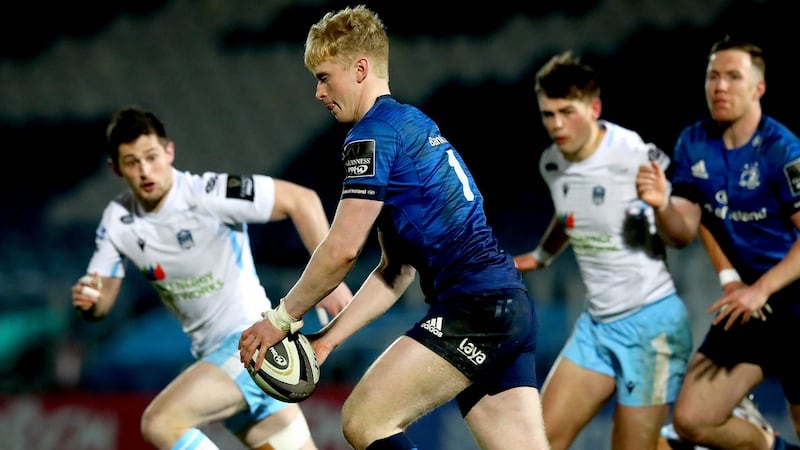
“His technical and tactical ability are through the roof for someone that young but he still has loads of physical development and robustness to do, to make sure he has a long career.
“Jamie is a little like Ryan Baird in terms of everybody could see what this guy has. His humility and his dedication set him apart from a lot of people.”
Despite Leinster needing to use 57 players this season, the sight of Leinster teenagers from the club system winning caps before they enter the academy is a new departure (Osborne was contracted midway through this season)
“There has been a move to go towards younger players in the centre of excellence rather than going to the older guys in clubs who have jobs and work and have a life really. These guys are just out of school and ambitious to make an Ireland 20s squad.
“Leo is very keen to promote these sort of guys. That has been the pattern over the last few years, the game is getting younger.”
Still, Baird’s direct route from St Michael’s College to professionalism is incomparable to Osborne playing for Naas RFC and a regional team that trains once a week.
The pathways of a schools player like Baird versus a youths player like Osborne shows how difficult a challenge Irish rugby is facing. The past decade of unseen work and system building could unravel without the trickle down finances generated by crowds in stadiums.
Obstacles
Leinster have pushed coaches into previously untapped population areas, but the obstacles facing the next Trevor Brennan, coming from Leixlip, remains worlds apart from the carpool lifestyle of a boy from Mount Merrion.
The thing I find is the hardest for youth guys is travel. Without a parent to drive you, you are always under pressure
"There was Darragh Kelly from Crumlin, a great athlete who made our Leinster 19s, but he had to cycle into training after working in pubs the night before. I would always be aware of the challenges for guys from tough working class backgrounds to make the demands that are needed to get into the centre of excellence.
"It is easy to just say 'Aw, in 10 years time we will have lads like Ellis Genge [from a council estate in Bristol] coming through.' It needs a lot of hard work from community rugby people and people in clubs to keep that going because you could bring a guy in for one or two sessions but the next step is to consistently drive him on.
“The thing I find is the hardest for youth guys is travel. Without a parent to drive you, you are always under pressure. That is just the obvious practical example of breaking through for the non traditional rugby areas.
“But that is the vision.”
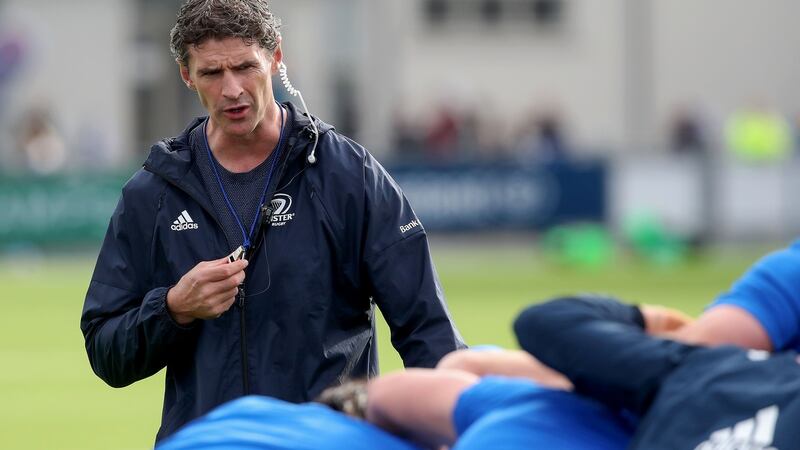
This vision needs to cope with the collapse of the IRFU’s financial model. Currently, Leinster invests €1.5 million annually into community rugby.
“The growth in the staff and evolvement in those areas is huge in the last number of years but that is going to take a bit of a hit,” Hogan conceded. “To be straight up about it, with the hit to the IRFU and Leinster finances, we won’t be able to keep the same number of staff seeing these guys in their own environments to be able to transition them through.
“We just have to maintain the good work that has been done over the last few years in these really difficult 12 to 18 months.”
The worry exists that Leinster might fall behind other major European clubs, never mind the largely unaffected southern hemisphere countries like Australia and New Zealand.
“It would be a big concern,” said Hogan. “There is no point denying that. We just need to get people back playing and hopefully they are still involved in the game and hopefully get the staff out there to see them playing and keep encouraging them to come back to rugby, be it through the club or the school.”
The Shane Horgan Cup’s cancellation last year and potentially this year could put the emphasis back on players from traditional avenues.
“I think we still have a good handle because of what we are doing remotely or online, which is getting extremely tiresome for the kids, but you would be worried about that generation, maybe the current second or third year guy who we wouldn’t really know that well until we see them in the Shane Horgan or the Junior Cup. You are not seeing them at all and are just relying on word or mouth and the relationship we have with their club coaches and school coaches, who themselves haven’t been able to train them.
“There is that unknown, no doubt about it. This next period means there is going to be a vacuum.”













